Consider that you have three artists in a matplotlib plot. What is the easiest way to not show the intermediate-level artist in the bbox of the top-level artist while retaining the low-level artist visible throughout the whole area?
Illustration of what I want to achieve:
It there was no requirement of being able to see the lowest level a non-transparent facecolor of the toplevel plot would be enough. This does not work with the three levels as then the both of the lower levels would be concealed.
See this IPython notebook for a solution using shapely. Here is a not yet completely functional pure matplotlib example, but I'm hoping there is a simpler way of getting the same result that I have not thought of yet.
import numpy as np
import matplotlib.pyplot as plt
from matplotlib import patches, cm
from matplotlib.path import Path
fig, ax = plt.subplots()
imdata = np.random.randn(10, 10)
ax.imshow(imdata, extent=(0, 1, 0, 1), aspect='auto', cmap=cm.coolwarm)
text = ax.text(0.5, 0.5, 'Text', fontsize='xx-large', fontweight='bold',
color='k', ha='center', va='center')
renderer = fig.canvas.get_renderer()
bbox = text.get_window_extent(renderer).transformed(ax.transData.inverted())
bboxrect = patches.Rectangle((bbox.x0, bbox.y0), bbox.width, bbox.height)
bbpath = bboxrect.get_path().transformed(bboxrect.get_patch_transform())
patch = patches.Rectangle((0.3, 0.3), 0.4, 0.4)
path = patch.get_path().transformed(patch.get_patch_transform())
path = Path.make_compound_path(path, bbpath)
patch = patches.PathPatch(path, facecolor='none', hatch=r'//')
ax.add_patch(patch)


